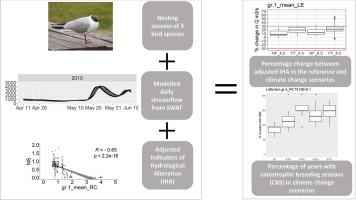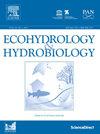Future of birds nesting on river islands in the conditions of hydrological variability caused by climate change
Abstract
The mew gull (Larus canus), little tern (Sternula albifrons) and black-headed gull (Chroicocephalus ridibundus) are threatened in Poland by the loss of breeding habitats due to changes in the hydrological regime of rivers and the frequency and length of inundation. Analysis of daily flows generated from the SWAT model allowed us to obtain the values of hydrological characteristics expressed as Indicators of Hydrological Alteration (IHA) and find the relationship with collected data on nesting success on islands and sandbanks in the Middle Vistula from 2004 until 2018. For each bird species, a set of adjusted IHA was calculated for future scenarios (2021-2050 and 2071-2100). The projections were prepared on the basis of EURO-CORDEX and contain two scenarios of changes in greenhouse gas concentrations: RCP4.5 and RCP8.5. Catastrophic breeding seasons quantification was carried out to assess the number of years that will have unsuitable hydrological breeding conditions in the projected climate change. The mew gull noted the lowest nesting success (during 2004-2018) but it seems that hydrology is not the principal factor causing it. This species will experience an increase in high flows due to climate change in the far future scenarios. The black-headed gull is projected not to be affected by an increase in the percentage of catastrophic breeding seasons due to climate change. The little tern seems to be the most affected by projected climate change due to an increase in high flows and, in consequence, an increasing percentage of catastrophic breeding seasons. The results confirmed the importance of hydrologic change for avian nesting success.


 求助内容:
求助内容: 应助结果提醒方式:
应助结果提醒方式:


